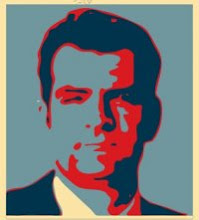
On a gathering storm comes
a tall handsome man
In a dusty black coat with
a red right hand
He’ll wrap you in his arms,
tell you that you’ve been a good boy
He’ll rekindle all the dreams
it took you a lifetime to destroy
He’ll reach deep into the hole,
heal your shrinking soul

It is worth noting that there is no glimpse of transcendence in Cave’s early lyrics, nor even some sense of some earthly resolution; the fraught love songs that he specialised in back then tended to end as they began, messily, inconclusively. Indeed, it is this very uncertainty, this embrace of confusion that often seemed to be his key inspiration; no one else writes about emotional turmoil quite so unflinchingly. If many of these tracks grew out of the personal chaos of Cave’s life, there is also often a bigger, darker undercurrent raging here, barely contained: Like the later Bob Dylan, the early Nick Cave often seems like someone disgusted by, or railing against, the world around him, struggling to voice that disgust righteously but without nihilism or misanthropy. It often seems, too, that he is articulating nit just the constant tremors of a life out of kilter but of a world gone wrong.

Hence, I think, the range of characters that he often speaks through: the righteous con on death row in The Mercy Seat, the visionary southern preacher articulating the warped Old Testament logic of Tupelo. There are here echoes here of certain literary archetypes: the visionaries and hucksters that populate Flannery O’Connor’s Gothic Southern landscapes, the fevered imaginations that drive Faulkner’s characters, strugglers in a relentlessly brutal world. And always, woven through these narratives, a Nick Cave signature: the lurking shadow of Old Testament fate -the lingering suggestion that the possibility of redemption is far outweighed by the possibility of retribution.


It seems logical, in retrospect, that Nick Cave should turn to certain old song forms to both expand, and define, his unfolding vision, to anchor the extremes of darkness and light that characterises his songwriting. In both the Blues and folk traditions, lurks a dark seam of often confessional ballads that could be generically grouped under the title, Death Songs.
Here the, Cave approaches what the poet, T.S Eliot, called “a condition of complete simplicity” and it would not be overstating the case to suggest that this is certainly as close as the singer has yet come to achieving a state of grace through - or, perhaps, in - music.

Another poet, W.B Yeats, who knew a thing or two about the reconciliation of extremes, once wrote that “the end of art is peace. And the pursuit of art is like the pursuit of religion in the intense preoccupation it demands”. Tough critics have spoken of the new found spirituality in Nick Cave’s music, he has, in his intensely preoccupied way, and despite his lack of belief in “an interventionist God”, been on his own kind of inner quest for a long time now. A doubter’s quest, but one possessed of a spiritual element nonetheless. Which is perhaps the key reason for the calmness that informs these latter songs, the sense of reconciliation -with the world, with himself- that, for the time being, at least has replaced the brooding intensity of old. He remains tough, a melancholic. There is a pensive sadness about these songs, which is fine, for there are far too many happy songs in the world as it is.
Sean O’Hagan “The Best of Nick Cave and the Bad Seeds” sleeve notes.

